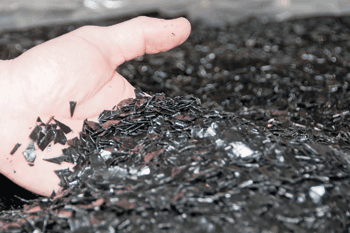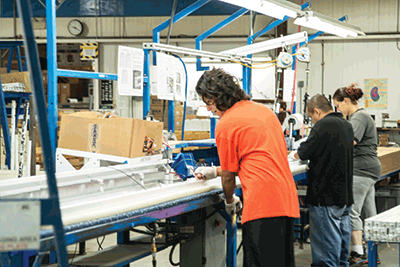It is beneficial, then, Pyszka noted, both for the state of Washington and for the nation as a whole, that the region keeps its focus on the manufacturing industry.
 “We’ve always been a great hub for manufacturing, because of our reliable and low-cost electricity and water,” Pyszka added. “That’s only going to improve as other sources of power suffer brownouts; those can be responsible for millions of dollars in lost revenue in just minutes.”
“We’ve always been a great hub for manufacturing, because of our reliable and low-cost electricity and water,” Pyszka added. “That’s only going to improve as other sources of power suffer brownouts; those can be responsible for millions of dollars in lost revenue in just minutes.”
It should come as no surprise to see energy and water cited as examples of the region’s primary resources; after all, Washington and Oregon ranked number one and two in the country in generators of renewable hydroelectric power in 2013, with Washington producing 29 percent of the nation’s net hydroelectric generation and Oregon producing 70 percent of its electricity generation from renewable energy sources.
Beyond affordable energy and water, what may be the most positive sign going forward, Pyszka said, is that the region is not only noted, but lauded, for the skill level of its manufacturing workforce.
“In talking to site selectors across the country, I’ve been hearing that our region is known as a skilled workforce,” Pyszka said. “Our region is one of the top in the nation in terms of net migration, so it’s easy to attract new workers as well.”
There are a number of different factors that contribute to this increase in skilled local manufacturing. For Kimberly Pincheira, director of communications and strategic partnerships for the Columbia River Economic Development Council (CREDC), the region’s focus on education tops the list.
“Schools are growing more important [as a vital component] in the pipeline of a skilled workforce,” said Pincheira. “Here in Southwest Washington, we have a fantastic education system, with all the different channels constantly communicating with each other. Students are getting basic job readiness skills in addition to technical knowledge, and across sectors, employers look for these things.”
Additionally, new forms of manufacturing (such as the 3D printing startup movement) have helped to diversity the manufacturing industry, Pyszka said.
“It’s more of craft manufacturing, which really aligns with 3D printing and how that’s going to become major in the industry,” she added.
Whatever the primary factor, both the manufacturing industry and the manufacturing workforce are blossoming in the region, and experts feel good about the long-term outlook, provided there are enough skilled workers to keep up with demand.
“The general trend we’re seeing is that there was a drop-off in jobs during the recession, but in recent months we’re seeing a slow increase. For long-term projections, we’re expecting to see a lot of retirements in the next 10 years as 20 percent of the local workforce are 55 or older,” Pincheira said.
Thanks to its high-cost products and low-cost productivity, based primarily on utilities and land cost, Oregon ranks number one in the country for lowest production cost per dollar output, as well as number one in the country for production cost-efficiencies. Washington, meanwhile, is expecting an employment boost in the manufacturing industry over the next ten years due to an expected need of about 30,000 workers, with welders, machinists and CNC machinists as the primary positions of interest.
“We project a semiconductor industry growth of 12 percent between 2010 and 2020, and a growth of the metals manufacturing industry of about 21 percent,” Pyszka said. “We’re really positioned to tap into the Asian market. We’ve got a great workforce to supplement this as well. These manufacturing jobs are very important because they’re filling that middle income wage, and helping to diversify the local manufacturing sector.”
{jathumbnail off}






